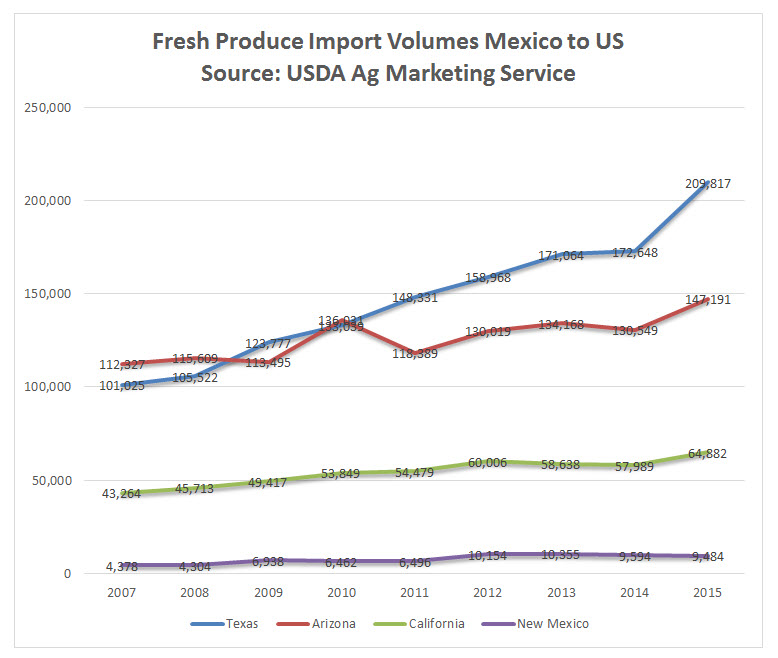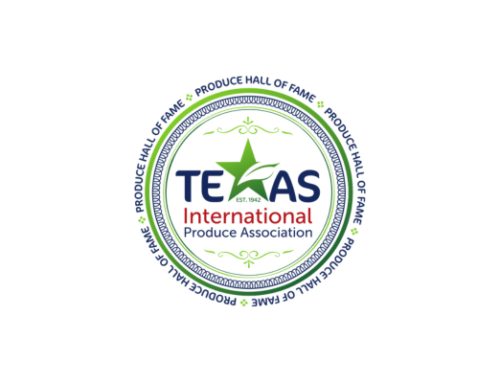(Mission, TX) Imports of fresh fruits and vegetables are surging across Texas’ international ports of entry, driving industry and economic growth in the Lone Star state, a recent study reports.
The study, conducted by the Texas A&M Center for North American Studies analyzed USDA data which showed that Texas volumes increased by more than 21% from 2014 to 2015, said Bret Erickson, president and CEO of the Texas International Produce Association.
Arizona volumes increased by 12.7% and California by 11.9%, he said.
The products include fresh fruits and vegetables such as tomatoes, peppers, lettuce, limes……… primarily grown in Mexico, often by the same grower/shippers who grow in Texas and other parts of the US, said Erickson.
“The Texas produce industry is growing incredibly fast, creating tremendous opportunities for produce companies and allied industries such as transportation, customs brokerages, cold storage operations, construction companies, box and pallet companies, food retailers and many others,” he said.
“Texas volumes of imported produce have grown a staggering 108% over the last eight years. By comparison, California has grown by 50% and Arizona by 31% over the same period.”
In 2015, Texas ports crossed approximately 210,000 load equivalents. Arizona crossed 147,000 loads, followed by California at nearly 65,000 loads.
Several Texas ports saw better than average increases. Pharr experienced a 35.5% increase from 2014 to 2015, while Laredo saw a 21.5% increase.
Experts at Texas A&M’s Center for North American Studies predicted that Pharr, TX would likely surpass Nogales, AZ sometime in late 2016 or 2017 as the busiest port of entry in the United States when it comes to fresh produce imports, said Luis Ribera, an agricultural economist and director of Texas A&M’s Center for North American Studies.
“The growth of produce imports through Texas, and more specifically through the Pharr Bridge is remarkable.” said Ribera. “Early data shows produce imports through Texas ports were already up by 30.3 percent for the month of January 2016 compared to January 2015.”
While the growth in Texas import volumes has translated positively into new construction of distribution and cold storage facilities and an increase in employment opportunities, there are challenges that come with the rapid growth.
“As an association, TIPA is engaged in a number of efforts to expedite the flow of trade and improve infrastructure,” Erickson said.
“We’ve pushed for and received increased staffing levels of FDA inspectors, successfully lobbied the state of Texas to help pay for extended hours of coverage at Texas ports, developed an overweight truck corridor and pushed to increase cooperation between Customs and Border Protection and USDA-APHIS resulting in more cargo release authority for CBP-Ag Specialists which speeds up insect identifications.”




